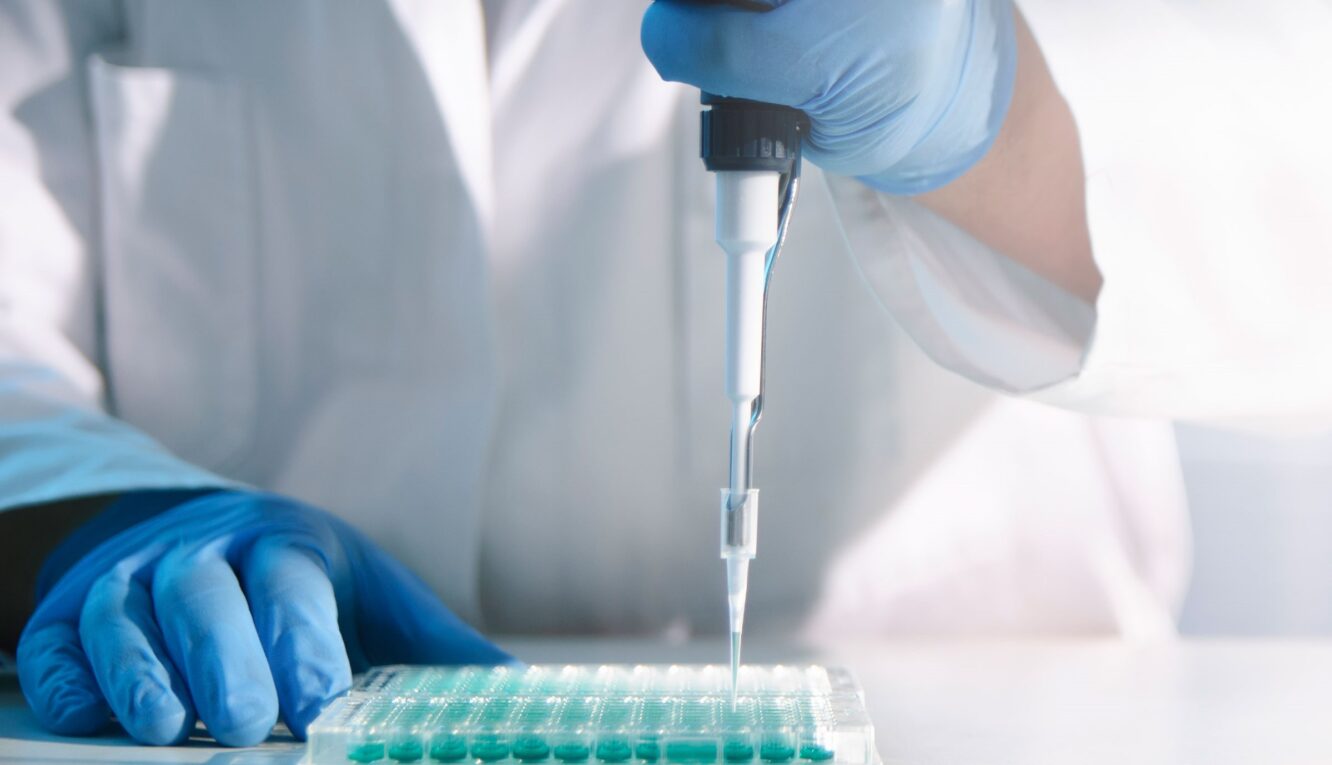Transfection is the process of deliberately introducing nucleic acids into cells. It involves reagent and equipment to deliver genetic material into host cells. Transfection has become a common tool in molecular and cell biology as well as in genetic engineering studies and research. There are several advantages to transfection including altering genome of living cells and production of recombinant proteins.
Commonly Used Transfection Reagents
There are variety of transfection reagents commercially available for introducing nucleic acids into cells. The most commonly used reagents are lipofection, calcium phosphate precipitation, DEAE-dextran, and electroporation. Lipofection uses cationic lipids or liposomes to encapsulate DNA and deliver it into the cell. cationic lipids interact electrostatically with negatively charged DNA and help in receptor-mediated endocytosis of DNA-lipid complexes. Calcium phosphate coprecipitation involves formation of insoluble calcium phosphate-DNA precipitate. The precipitate is endocytosed by cells and DNA released in endosomes. DEAE-dextran acts as a polycation that condenses DNA and facilitates its uptake. Electroporation uses brief high-voltage pulses to disrupt the plasma membrane and transport DNA into the cell interior. Choice of specific reagent depends upon cell type, DNA quantity, and desired transfection efficiency.
Equipment used for Transfection
A variety of specialized equipment, devices, consumables and kits are used to perform Transfection Reagents and Equipment. Micropipettes and tips are required to prepare DNA and reagent mixtures with accuracy. Centrifuges are used to concentrate DNA and precipitate calcium phosphate-DNA complexes. Tissue culture plates and multi-well plates provide surface area for growing and transfecting cells. Electroporators are employed to transfect cells by generating controlled electric pulses. Cuvettes are used as chamber to hold cell suspension during electroporation process. Fluorescence and light microscopes allow monitoring and analyzing transfected cells. Imaging systems help in quantitative analysis of transfection efficiency. Kits containing optimized reagents, buffers and protocols are available for transfection of different cell lines. Proper training in handling these equipment is necessary for successful transfection experiments.
Factors Affecting Transfection Efficiency
Multiple factors influence how well transfection reagents deliver nucleic acids into cells and expressing genes. Type of cell line significantly affects transfection potential – some cells are inherently harder to transfect than others. Age and confluency of cells also matter – exponentially growing healthy cells usually transfect better. Nature of transfected DNA plays a role – linear DNA incorporates at low efficiency than circular/supercoiled plasmid DNA. Transfection reagent, its quantity and method of delivery have major effect on transfection rate. Extracellular and intracellular conditions like salts concentration, pH, temperature must be optimized. Proper washing of cells after transfection is crucial to remove traces of reagents. Proper controls and calibration of equipment are necessary to ensure reproducibility of experiments involving transfection. Systematic optimization of these factors is key to improve transfection efficiency for specific cell type and experimental setup.
Applications of Transfection Technology
Transfection Reagents and Equipment has multitude of applications in basic research as well as commercial sector. It allows functional analysis of genes by overexpressing or knocking-down gene expression. Stable cell lines with integrated transgenes can be generated for industrial production of proteins and antibodies. Transfection aids production of viral and non-viral gene therapy vectors. Generating cellular disease and cancer models by transfecting oncogenes helps further our understanding of disease mechanisms. Development of vaccines, biomanufacturing and transgenic animals also utilizes transfection technology. This powerful tool has accelerated research in fields like neuroscience, immunology, developmental biology and signal transduction pathways. Continued improvements in transfection techniques and reagents will further expand its scope and drive novel discoveries.
Transfection involves use of specialized reagents and equipment to deliver nucleic acids into host cells. Various commonly used transfection methods include lipofection, calcium phosphate precipitation, DEAE-dextran and electroporation using specific reagents. A range of devices and consumables aid in transfection experiments. Multiple factors determine the efficiency of nucleic acid delivery and gene expression. Advanced transfection techniques have found diverse applications in biological research and biotechnology. Further refinements will help build upon the tremendous potential of transfection technology.
*Note:
1. Source: Coherent Market Insights, Public sources, Desk research
2. We have leveraged AI tools to mine information and compile it

